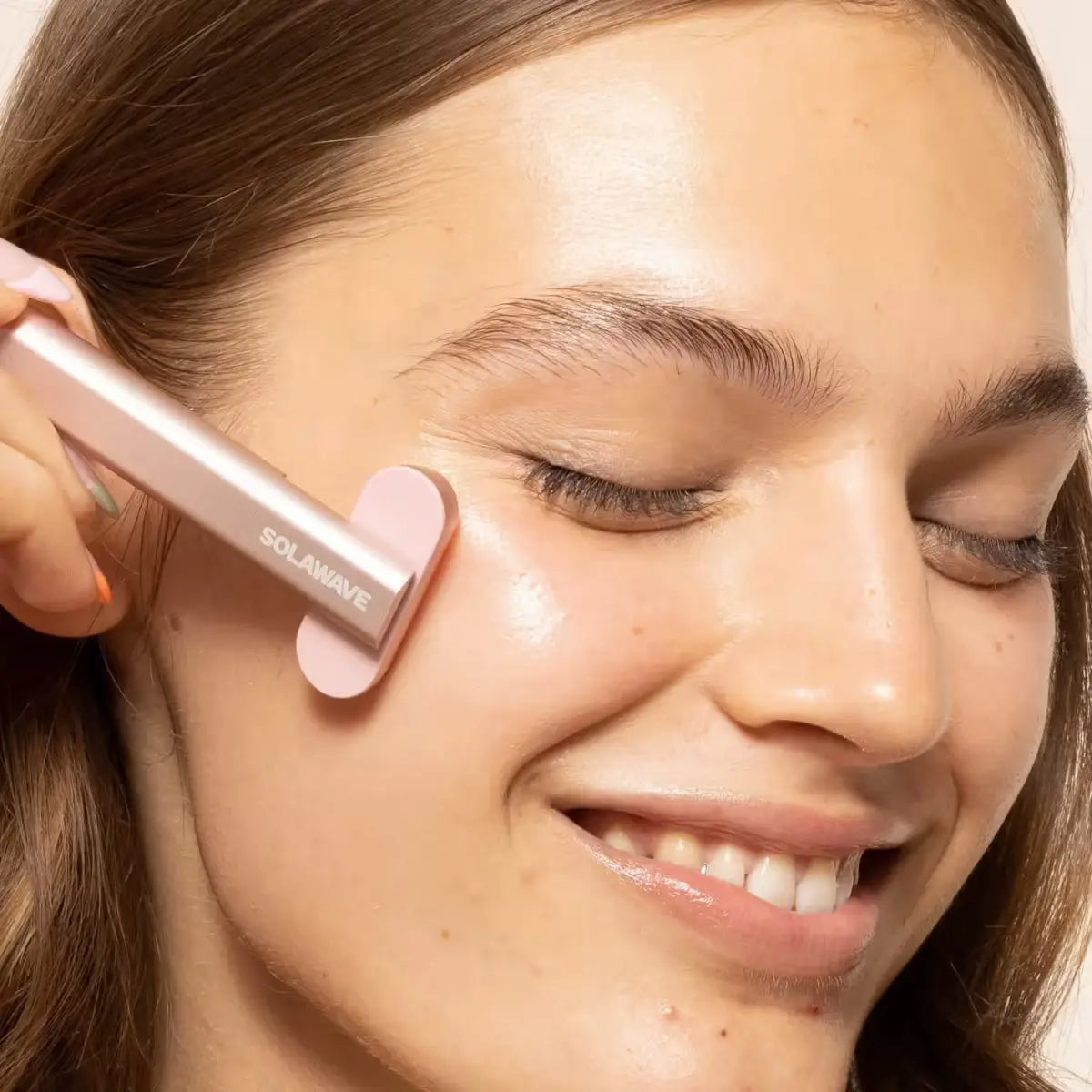

Blue Light Therapy Vs. Other Skincare Technologies: A Comparison
Feeling confused by the growing array of skincare technologies and wondering what makes Blue Light Therapy stand out? Deciding between Blue Light Therapy and other options can feel overwhelming, especially when you’re weighing cost, effectiveness, and safety. With conflicting information about acne treatments, potential side effects, and whether Blue Light Therapy is worth the price, finding clarity is a challenge. In this article, we’ll compare Blue Light Therapy with other popular treatments, exploring results, cost, and technical differences to help you confidently decide which aligns with your skincare goals.
What Is Blue Light Therapy?
Blue Light Therapy, often called phototherapy, uses specific wavelengths of blue light, usually between 405 and 420 nanometers, to target and destroy certain bacteria on the skin's surface. It's most commonly used for mild to moderate acne as it helps to effectively destroy Cutibacterium acnes, the bacteria responsible for pimples. The blue light penetrates the skin and activates porphyrins, molecules that naturally occur in these bacteria, to eliminate them. Blue Light Therapy is a non-invasive option, often preferred as an alternative or complementary treatment to traditional acne solutions.
What Are Other Skincare Technologies?
In addition to Blue Light Therapy, a wide range of skincare technologies is available to help address various concerns. Microdermabrasion physically exfoliates the outermost layer of skin to improve texture. Chemical peels use tailored formulations to peel away damaged skin layers, promoting smoother skin. Laser treatments work with focused light beams to target challenges such as wrinkles and dark spots. Microcurrent facials, using low-level electrical currents, aim to visibly firm and tone facial muscles. Red Light Therapy, often used alongside Blue Light Therapy, promotes skin rejuvenation by visibly reducing signs of aging and lessening inflammation. Each technique targets specific concerns, offering unique advantages depending on your skin needs.
Blue Light Therapy Vs. Other Skincare Technologies: A Detailed Comparison
Purpose and Function
Blue Light Therapy:
-
Designed to help target and destroy acne-causing bacteria with blue wavelengths.
-
Primarily serves as an antibacterial method to help reduce acne-related inflammation.
-
Provides a non-invasive solution for managing acne while being gentle on the skin.
Laser Treatments:
-
Uses focused light beams to tackle a broader range of concerns, including wrinkles, dark spots, and vein visibility.
-
Helps stimulate collagen and remove problematic skin layers or vessels.
-
Delivers more dramatic results but may involve more downtime and possible side effects.
Invasiveness
Blue Light Therapy:
-
A non-invasive option performed with LED devices or in-office procedures.
-
Does not require any needles or incisions, making it ideal for sensitive skin types.
-
Offers an easy, gentle approach to skincare with minimal side effects.
Microdermabrasion:
-
A minimally invasive technique that gently exfoliates the surface of the skin.
-
Uses a specialized device to remove dead skin cells for a refreshed appearance.
-
Often results in mild redness or sensitivity but requires little to no recovery time.
Treatment Areas
Blue Light Therapy:
-
Primarily used to treat acne on the face, back, or chest.
-
Adaptable for both small, targeted regions and larger acne-prone areas.
-
Allows precision in addressing problem zones without affecting the surrounding skin.
Chemical Peels:
-
Applied to various areas, including the face, neck, and hands.
-
Customizable in strength to focus on specific skin depths and issues.
-
Addresses concerns like sun damage, uneven tone, and fine lines across larger areas.
Long-Term Effects
Blue Light Therapy:
-
Provides ongoing acne management and reduces breakouts with regular use.
-
Does not significantly alter the skin’s deeper structures over time.
-
Requires consistent treatments to maintain visible benefits.
Red Light Therapy:
-
Supports healthy collagen production to help reduce the look of wrinkles and improve skin elasticity.
-
Helps promote overall skin repair for a glowing, rejuvenated appearance.
-
Consistent use can lead to healthier-looking, radiant skin.
How Does the Effectiveness of Blue Light Therapy Stack Up Against Other Treatments?
Blue Light Therapy is notably effective for mild to moderate acne, often performing comparably to topical solutions like benzoyl peroxide but with fewer irritating side effects. More intensive treatments, such as lasers or isotretinoin, may show greater improvements for severe acne but usually come with higher risks and additional care requirements. For concerns like wrinkles or deep skin damage, laser resurfacing and chemical peels can often yield more immediate visible results. The ideal choice depends on your specific goals and skin condition, with Blue Light Therapy shining as a gentle at-home solution for acne-focused care.
What Are the Cost Differences Between Blue Light Therapy and Alternative Skincare Technologies?
Costs for skincare treatments can vary. In-office Blue Light Therapy sessions typically cost $50 to $300 each, accumulating to several hundred or more for full courses. Home-use devices, which are less powerful but can yield similar results, are available from $30 to $200. Laser treatments, on the other hand, range significantly higher, from $200 to over $1,000 per session. Chemical peels generally fall between $100 and $500 each, while microdermabrasion sessions cost around $75 to $200. Blue Light Therapy tends to be a more budget-conscious selection among these technologies, especially for those considering gentle, at-home options.
Discover the Bye Acne 3-Minute Pimple Spot Treatment
If you’re looking for an affordable, effective way to address pimples at home, the Solawave Bye Acne 3-Minute Pimple Spot Treatment is a smart addition to your skincare routine. This portable, FDA-cleared device uses both Blue Light Therapy and Deep Red Light Therapy to target the appearance of mild-to-moderate acne and visible inflammation, without harsh ingredients or downtime. In just three minutes per spot, Blue Light Therapy helps eliminate acne-causing bacteria and reduce oil, while Deep Red Light Therapy supports a calmer, less inflamed look.
After using the device, you can follow up with the included serum-infused Microdart Patches. These hydrocolloid patches are packed with ingredients like niacinamide, green tea, and gotu kola to help soothe, calm, and visibly brighten the skin while absorbing impurities. The Bye Acne kit is gentle, non-invasive, and easy to use—perfect for travel or daily use at home. It’s a great way to upgrade your skincare routine with professional-inspired technology, all at a budget-friendly price point.
Are There Significant Side Effects With Blue Light Therapy Compared to Other Options?
Blue Light Therapy is widely regarded as safe, with minimal side effects like redness, dryness, or temporary photosensitivity. In contrast, procedures like chemical peels and laser resurfacing can cause noticeable peeling, irritation, and downtime. Stronger treatments, such as isotretinoin, carry the potential for more severe systemic impacts. Adhering to proper Blue Light Therapy guidelines ensures safety and effectiveness, making it an appealing option for those seeking low-risk skincare solutions.
For Acne Treatment, Which Skincare Technology Delivers the Best Results?
The best acne treatment depends on your skin’s needs and the severity of acne. Blue Light Therapy offers promising outcomes for mild to moderate acne, particularly when combined with topical treatments. Severe acne may respond better to laser treatments or oral medications such as isotretinoin. Treatments like microdermabrasion and chemical peels can significantly improve skin texture and the look of dark spots after acne. A holistic, dermatologist-guided approach often achieves the best outcomes.
How Do Blue Light Therapy and Red Light Therapy Differ in Their Benefits?
Blue Light Therapy and Red Light Therapy work differently but complement each other. Blue light focuses on helping reduce acne by targeting bacteria and curbing inflammation. Red light, meanwhile, promotes skin rejuvenation by supporting collagen and boosting circulation. Devices combining both therapies offer versatile options for comprehensive skincare in one system, addressing multiple concerns at once.
How to Choose the Right Skincare Technology for Your Specific Skin Needs
-
Identify Your Primary Skin Concerns: Clarify whether your focus is on acne, wrinkles, or pigmentation to guide your choice.
-
Consider Your Skin Type and Sensitivity: Gentle options like Blue Light Therapy suit sensitive skin, while more robust treatments may be better for thicker skin.
-
Assess Your Budget & Time Commitment: Evaluate what you can allocate for multiple treatments or devices and whether you prefer quicker results.
-
Research Potential Side Effects: Learn about each treatment’s risks and recovery requirements before deciding.
-
Consult with a Dermatologist: Get a tailored plan to ensure safe and effective skincare based on professional advice.
Conclusion
Blue Light Therapy offers a gentle, effective solution for acne management, though consistent use and a solid routine are key to maintaining healthy skin. This non-invasive technique is best suited for sensitive skin. Coupled with cleansing and sun protection, it can enhance your routine sustainably.
Looking for a targeted way to address pimples with the power of Blue Light Therapy? The Bye Acne 3-Minute Pimple Spot Treatment & Microderm Patches from Solawave uses Blue Light Therapy to help eliminate acne-causing bacteria and reduce oil, giving you a gentle, effective option for clearer-looking skin. Add this easy-to-use device to your routine for a visible boost in your skin’s appearance, right at home.
Sources:
-
Blue Light in Dermatology | National Center for Biotechnology Information (NCBI)
-
Light-Emitting Diodes (LEDs) in Dermatology | National Center for Biotechnology Information (NCBI)






















